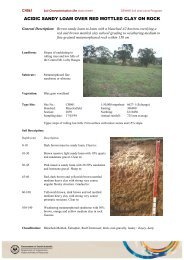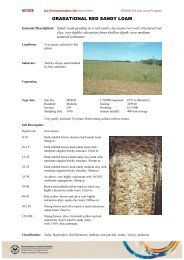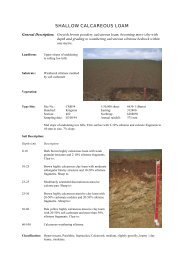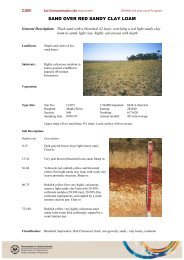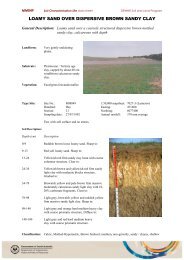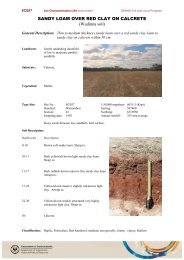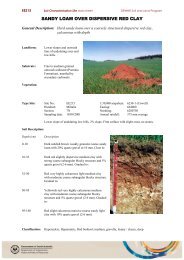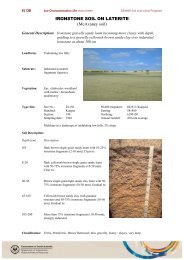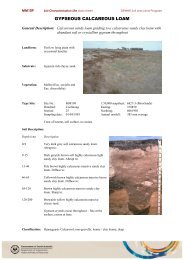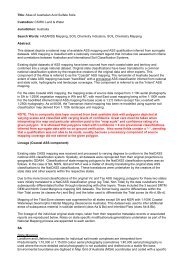Create successful ePaper yourself
Turn your PDF publications into a flip-book with our unique Google optimized e-Paper software.
Table 31: Method for the estimation of water retention parametersMethodDescription1 Estimate derived from direct measurements of water retention in the landunittract2 Water retention data estimated from direct measurements (e.g. Cresswelland Paydar (1996))3 Water retention data estimated using pedotransfer functions such asWilliams et al. (1992) and with predictor variables derived frommeasurements in the land-unit type4 Estimate based on direct measurements of similar soils5 Estimate based on experience with similar soilsDiscounting estimates of available water capacityThe estimates of water retention listed above refer to the fine-earth fraction (e.g. AWC fe ). They need to beadjusted to take account of coarse fragments, both their volumetric percentage and porosity, to estimateavailable water capacity of the whole soil (AWC ws ).AWCws= AWCfe⎛100 − CF ⎞ ⎛ CF ⎞× ⎜ ⎟ + AWCcf× ⎜ ⎟⎝ 100 ⎠ ⎝100⎠In most cases, coarse fragments will be non-porous and the right-hand term will be zero (i.e. AWC cf = 0).Estimation of water retention properties for porous coarse fragments (e.g. AWC cf ) is difficult becausereliable data are rarely available. Cresswell and Hamilton (2002) outline how to calculate total porosity inthe presence of porous coarse fragments. However, information is needed on the water retentionproperties of the coarse fragments before a reliable estimate can be made on a whole-soil basis. If coarsefragments have the same water retention properties as the fine earth, then the AWC ws and AWC fe will beequivalent. It is feasible for AWC of the coarse fragments to be greater than AWC fe (i.e. AWC ws and coarsefragment content will be positively correlated). The procedure for estimation will vary depending on theavailability of information.The estimate of coarse fragment percentage for the layers (see page 41) are averages and care is neededwhen bands of coarse fragments are present. Porous coarse fragments are common in some parts ofAustralia (e.g. southwest Western Australia).47




